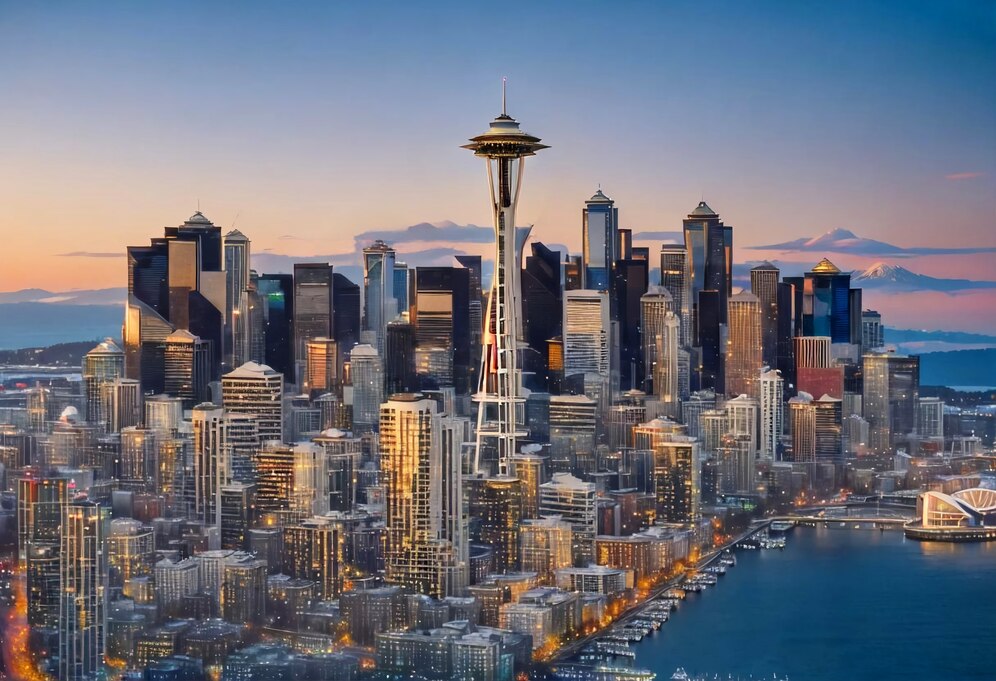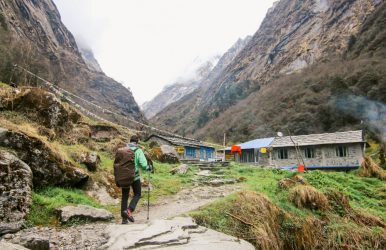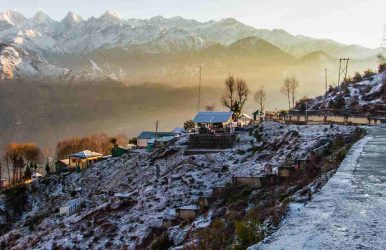5 Popular 2 Week Treks in Nepal
BY Sibashree Mar 21, 2025
Nepal, a land of majestic peaks and fresh natural air is a dream destination for Trekkers around the World. Nepal holds the world's most prominent mountains and provides lasting trekkers with refreshing journeys through forests, tri-level fields, and snow-covered paths across its varied natural landscapes. Nepal's many short trek routes like EBC, ABC, Manaslu Circuit Trek, Upper Mustang Trek and Annapurna Circuit Trek, let's all adventurous explore nature and culture in no amount of days. These five enjoyable Nepal treks below provide an excellent hiking experience over just the time of two weeks. 1. Everest Base Camp Trek No journey can compare to the allure of Everest Base Camp Trek, one of Earth's most attractive hiking trails. As you travel up on this famous Moderate to Challenging difficulty level trail towards the heart of Khumbu, each step brings you closer to the world's highest mountain, Mount Everest. After landing in Lukla, travelers penetrate the Sherpa towns and dense rhododendron forests prior to crossing high altitude, glacier areas. As we move forward, Hikers reach Namche Bazaar, a lively mountain settlement with its delightful sights of prayer flags and teasing Everest views alongside Lhotse and Ama Dablam. After this segment, the trail goes to Tengboche Monastery which preserves an old Buddhist heritage offering amazing views of Himalayan peaks. Starting the journey to Everest Base Camp tests your strength but promises you an icy and memorable encounter with High Mountain wilderness that carves into your memory. The Everest Base Camp trek runs for as little as a 12 day period even despite its steep environment and altitude. Spring (March-May) and autumn (September-November) represent ideal times for this trek as the stable weather in this time frame lets you see the mountains in their best light. If you want to skip some days to get aerial view of the Himalayas, you can take Everest Helicopter Tour which gives you 30 minute of stunning mountain views including the Everest. 2. Annapurna Circuit Trek The Annapurna Circuit route leads trekkers across Nepal's diverse landscapes, from subtropical forests bottoms then high-elevation meadows then ending at the edge of the Himalayan range. The route circles Annapurna Massif, offering awe-spiring views of peaks like Annapurna Dhaulagiri, and Machapuchare. The highlight of the trek is one of the world's highest trekking passes, Thorong La Pass (5,416m). The ascent here is tough, but despite the steep climb people reach the top feeling proud, enjoying breathtaking views across the horizon. While walking along the trails, hikers discover villages influenced of Hindu and Tibetan Buddhist traditions blended, experiencing the warmth of the Gurung’s, Thakali, and Manang communities. Let’s not forget about Tatopani's natural hot springs. A dip here makes People experience relief from their tired muscles prior to heading to Poon Hill to witness one of the world's stunning sunrises over the Himalayas. This trek can be as long as 30 days, but we also have a 13 days route for this moderate to challenging Circuit trek. Advisable time periods would be March to May and September to November for an experience that is undisturbed by nature. 3. Manaslu Circuit Trek If you want to explore more remote and undisturbed trekking trails the Manaslu Circuit trek package stands out as a preferred route. The trek routes of the eight highest peaks in the World, Mount Manaslu (8163 meters) guides travelers through glacier rivers and scenic high-altitude passes. Unlike Everest and Annapurna, The Manaslu trail stands apart for it’s uncrowded and peaceful nature providing hikers perfect space for immersion in Nepal's unspoiled nature. The path follows original paths used by salt traders taking you through small Tibetan villages that have stayed true to their traditional ways since time immemorial. The most hard but fulfilling part is Passing through Larkya La La (5,106 meters) that requires physical fitness and endurance which results in incredible mountain views of Manaslu, Hiking Himal and neighboring peaks. Trekkers find supreme enjoyment on the challenging Manaslu Circuit Trek. You need 14 days to complete this adventure and the advisable time period which offers optimal conditions would be from March to May and September to November. 4. Upper Mustang Trek This moderately difficult Upper Mustang Trek leads adventurers to Nepal's hidden land where trekkers encounter a stark contrast to Nepal's typical lush hillside regions. Also known as the “Last Forbidden Kingdom”, Mustang exists below the Annapurna range rain shadow, creating a beautiful desert-like landscape with deep canyons, eroded cliffs, and ancient caves. This trek feels like stepping in the past. This Ancient Tibetan territory holds centuries of Buddhist culture. Its many old monasteries, chorten temples, and traditional brick houses line its landscape. The walled fortress of Lo Manthang shows its whitewashed houses and royal palaces beside colorful fluttering prayer flags. The distinct features of this destination go beyond its special landscape. Mustang stayed hidden to foreign visitors until 1992, when they finally opened it to the public. The trek generally takes 14 days. The best experience would be between spring and autumn months, when the skies are clever and the weather dances mild. 5. Annapurna Base Camp Trek When seeking a quick but dazzling hiking adventure, the Annapurna Base Camp Trek represents an excellent choice. In 14 days this trek brings trekkers deep into Annapurna Sanctuary, where a glacial amphitheater hosts Annapurna's peaks, including its main summit and four surrounding giants, Annapurna I, Annapurna South, Machapuchare, and Hiunchuli. The Annapurna region's lower slopes start with trails that run through cultivated fields, passing bamboo patches and traditional Gurung communities. Before the final ascent to the Annapurna Base Camp, hikers often stop to visit the Jhinu Danda for its natural hot springs. This Moderate difficulty trek is indeed a little tough, but the 360-panorama view you'll get from here, that makes it all worth it. The road to Annapurna Base Camp frequently links to Poon Hill, where trekkers enjoy the sunrise views above Annapurna and Dhaulagiri ranges. The trek is suitable for both intermediate and advanced walkers. To make the Hike even more memorable, advised seasons to visit would be Spring and autumn. Final Say No other nations on earth have trekking routes that match the legacy of the Himalayan routes of Nepal. Whether you dream of the mighty Everest Base Camp, wish to explore the hidden routes and valleys of Mount Manaslu and Upper Mustang, or want to dive into the rich culture of Annapurna region. There's a trek for it all. All these treks mentioned are perfect for the time saving Travelers who want an unforgettable Himalayan exploration during their brief vacations. Each one can be completed within two weeks. A short adventure that leaves a long and lasting impact on your memorial lane.















